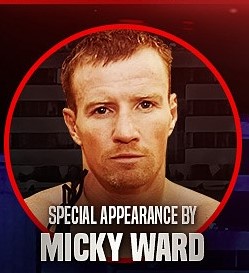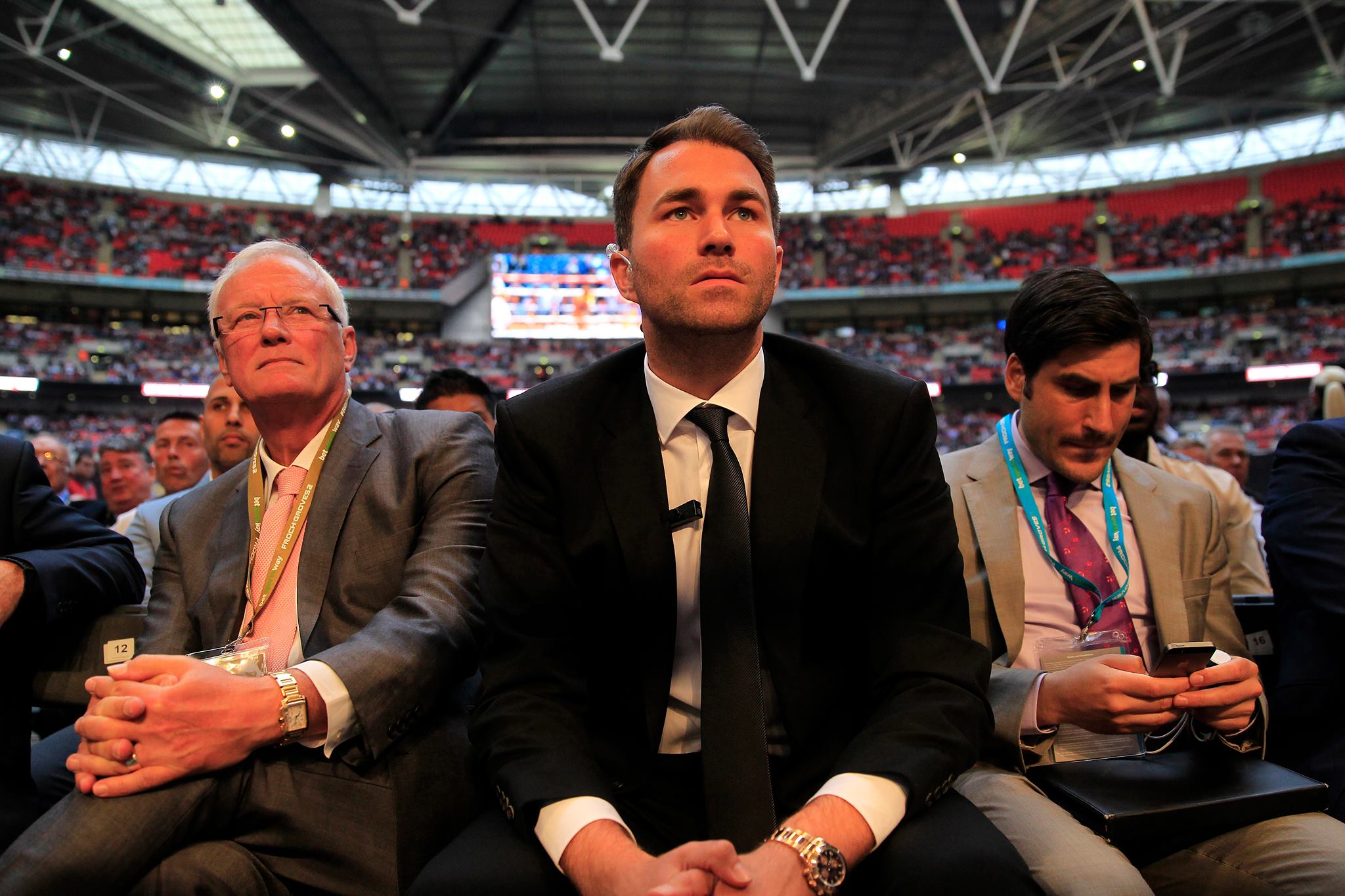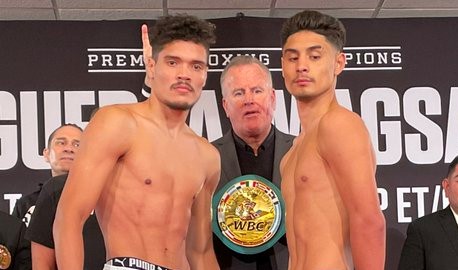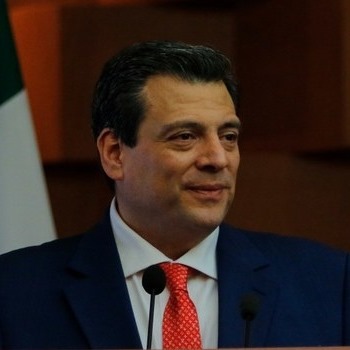by Charles Jay
As a native of Alabama, former heavyweight champion Evander Holyfield had the opportunity to speak to those in attendance at a dinner to mark the closing of the Olympic Boxing Trials in Mobile, and he may have turned a few heads when he said that pay-per-view has been the biggest factor that has killed boxing in recent years, not the emergence of mixed martial arts.

“What’s hurting boxing is they’re not putting it on free television. When you put anything on television, it represents somebody. Every person that gets out, represents somebody,” he told the website AL.com.
To expand on his thoughts, Holyfield explained that when he saw the Spinks brothers win gold medals at the 1976 Olympics, that served as an example to him.
“The Spinks brothers didn’t speak very well, but they won gold medals and that represented something.”
These are strange assertions to make because in a way, Holyfield is biting the hand that fed him. After all, he rose to prominence during an era where the universe of pay-per-view expanded greatly, and there is no doubt that expansion made him a man who became rich beyond his wildest dreams. In fact, Holyfield has been involved in fights that have generated 12.6 million buys, “representing” over half a billion dollars in revenue, and that places him third on the all-time list.
Furthermore, it can be argued that Holyfield, if we take his comments at face value, is being just a bit hypocritical here, because his fights with Frans Botha and Sherman Williams, which most people would not consider to be legitimate pay-per-view attractions, were nonetheless held as subscriber-only events. A proposed rematch with Botha, which is slated to take place later this year in South Africa, would most likely go the pay-per-view route as well, since Botha has had to take it upon himself to raise funds to guarantee the “Real Deal” a million dollars.
But the funny thing is, Holyfield is absolutely right.
Even though you can claim that he has been part of the “problem,” there is no denying that indeed a problem exists. And the problem isn’t that there are pay-per-view fights, but that there is not a whole lot out there that constitutes easy access. What we can classify as “free television” these days may be different from what it was twenty years ago; after all, when cable was in its earlier years there was more value placed on exposure over the broadcast networks. Now almost everybody has it, so the more accurate statement for the times we live in, at least here in the U.S., is that “free” means “not premium.” That is to say, not pay-per-view and not HBO, Showtime or some other service that someone needs to subscribe to separately.
The fights we have seen on the over-the-air networks like CBS, NBC, ABC or Fox have been few and far between. As I was just getting involved in this business, those outlets were critical to building stars. And they were very successful in elevating fighters to the status of pay-per-view attractiveness. That’s because the networks were able to gather an audience, tell a story, and air a fight between combatants who were both of world-class status, or were at least competitively matched.
Say what you want about the abrasiveness of Ferdie Pacheco, or his position of conflict of interest in being both “matchmaker” and color commentator, but his series of fights on NBC, and the philosophy behind it (if you go back that far, you know doubt heard the term “crossroad fights” time and again) was a winner. When a fighter got through some of those matches, the public could buy the proposition that he was legitimate. At the same time, it was a great platform for exposing those fighters who were more sizzle than substance.
So the entities were being groomed, and as a lot of people had seen them already, they had a built-in following that they could carry into a pay-per-view telecast.
Such is not the case now. Sure, ESPN does its “Friday Night Fights,” but that is a version that is scaled way down from what it used to present. Showtime did a decent job of emulating NBC’s old strategy with its “ShoBox” series, and even the harshest critic of HBO has to admit that the premium channel has put on many of the important fights, but the fact is, the price tag on subscribing to these services puts a limit on how many people are going to see them. In a way, you are paying to watch fighters who they are prepping for you to pay even more to watch. By contrast, the UFC, which does a lot of business on pay-per-view, has done a good job of getting to the “free” audience via Spike TV and “The Ultimate Fighter.” That showed some real marketing savvy.
You can argue, among other things, that if you really want to see boxing, you’re going to subscribe to HBO, Showtime, or both, but that is to miss the point. The point is that to grow a sport like boxing, you need more than the people who are already predisposed to watch your product. You need to make NEW boxing fans. And the “free” TV model, where often the fights were placed within an anthology series (e.g., Wide World of Sports, CBS Sports Spectacular, NBC Sportsworld) was an ideal vehicle for that.
At the risk of overusing the word “point,” look at it as if the fan was going from Point A, which is watching on free TV, to Point B, watching on a premium network, to Point C, buying a pay-per-view, with perhaps a Point B-2 being attendance at a live boxing show.
There are parts of that process that are missing with the lack of boxing on so-called “regular” television. Sponsors have become less enamored with the sport; in fact, you could say they have fled like lemmings. And one of the effects is that fights that can’t get to a wider audience – perhaps like the Holyfield fights we mentioned earlier in the story – have no choice but to look for any audience it can find on pay-per-view.
I would think ESPN has the ability to take steps toward remedying the situation right now, if they want to. They essentially comprise whatever ABC Sports is, so they could put boxing on that platform as a way of creating a new audience, and I am sure they could muscle some sponsors into coming along for the ride.
But for all the lip service, do they really believe enough in the sport? You would think that since they don’t have any equity to speak of in mixed martial arts, they would be anxious to increase the value of the boxing product, and the boxing audience. But unless someone does it, it won’t get done.


















Pingback: Bibliography Blogs 15-20 – Site Title
Pingback: Blog #17: Boxing In the 1980’s: The End of “Free” Boxing – History of Boxing
Pingback: Evander Holyfield: Pay-Per-View is Killing Boxing – Sportify Report
LarryFex
06/25/2024 at 3:05 am
pin up giris: pin up casino azerbaycan – pin up 360
AlbertImipt
06/25/2024 at 4:30 am
pin-up online casino https://azerbaijancuisine.com/# pin up
pin-up cazino
Williamfrumn
06/26/2024 at 11:30 am
purple pharmacy mexico price list: mexican pharmacy northern doctors – mexican pharmaceuticals online
JeffreyMok
06/26/2024 at 12:42 pm
http://northern-doctors.org/# medication from mexico pharmacy
Williamfrumn
06/26/2024 at 6:15 pm
best online pharmacies in mexico: mexican pharmacy online – buying from online mexican pharmacy
JeffreyMok
06/27/2024 at 3:14 am
https://northern-doctors.org/# mexican pharmacy
Williamfrumn
06/27/2024 at 7:18 am
mexico pharmacies prescription drugs: Mexico pharmacy that ship to usa – medicine in mexico pharmacies
JeffreyMok
06/28/2024 at 12:33 am
https://northern-doctors.org/# mexico pharmacy
Williamfrumn
06/28/2024 at 4:05 am
mexican drugstore online: northern doctors – reputable mexican pharmacies online
Williamfrumn
06/28/2024 at 7:15 am
pharmacies in mexico that ship to usa: northern doctors – medication from mexico pharmacy
Williamfrumn
06/28/2024 at 8:53 am
mexican drugstore online: Mexico pharmacy that ship to usa – п»їbest mexican online pharmacies
Williamfrumn
06/28/2024 at 1:49 pm
reputable mexican pharmacies online: Mexico pharmacy that ship to usa – medicine in mexico pharmacies
Richardled
06/28/2024 at 5:51 pm
buying from online mexican pharmacy [url=https://northern-doctors.org/#]mexican pharmacy online[/url] mexican border pharmacies shipping to usa
Williamfrumn
06/28/2024 at 6:59 pm
mexican pharmacy: buying prescription drugs in mexico – purple pharmacy mexico price list
Williamfrumn
06/28/2024 at 10:18 pm
pharmacies in mexico that ship to usa: mexican northern doctors – purple pharmacy mexico price list
JeffreyMok
06/29/2024 at 12:27 am
http://northern-doctors.org/# purple pharmacy mexico price list
DonaldBiono
06/29/2024 at 5:05 am
mexico drug stores pharmacies
http://cmqpharma.com/# mexico drug stores pharmacies
mexico pharmacies prescription drugs
Ronnienop
06/29/2024 at 6:31 pm
medication from mexico pharmacy [url=https://cmqpharma.com/#]mexican pharmacy online[/url] mexico drug stores pharmacies
Michaelmoolo
07/19/2024 at 11:42 pm
pharmacy in canada: pharmacy canadian superstore – northwest pharmacy canada
Davidtoows
07/20/2024 at 12:42 am
legitimate canadian pharmacy online: canadian medications – canadian drugs online
Davidtoows
07/20/2024 at 5:46 am
canadian pharmacy mall: vipps canadian pharmacy – adderall canadian pharmacy
Michaelmoolo
07/20/2024 at 8:28 am
canadian pharmacy: reliable canadian pharmacy reviews – the canadian pharmacy
Davidtoows
07/20/2024 at 10:43 am
indianpharmacy com: buy prescription drugs from india – reputable indian online pharmacy
CharlesRor
07/20/2024 at 12:27 pm
mexican pharmaceuticals online [url=http://foruspharma.com/#]mexico drug stores pharmacies[/url] medication from mexico pharmacy
Davidtoows
07/20/2024 at 4:34 pm
purple pharmacy mexico price list: buying from online mexican pharmacy – reputable mexican pharmacies online
Michaelmoolo
07/20/2024 at 5:57 pm
Online medicine order: Online medicine order – world pharmacy india
Davidtoows
07/20/2024 at 9:32 pm
online canadian pharmacy: canadian discount pharmacy – legitimate canadian pharmacy
CharlesRor
07/20/2024 at 10:18 pm
india pharmacy mail order [url=http://indiapharmast.com/#]cheapest online pharmacy india[/url] indian pharmacy
Davidtoows
07/21/2024 at 2:44 am
cheapest online pharmacy india: Online medicine home delivery – indianpharmacy com
Michaelmoolo
07/21/2024 at 2:46 am
mexico drug stores pharmacies: medication from mexico pharmacy – purple pharmacy mexico price list
Davidtoows
07/21/2024 at 7:37 am
purple pharmacy mexico price list: reputable mexican pharmacies online – best online pharmacies in mexico
Myronnepay
07/21/2024 at 10:53 am
https://clomiddelivery.pro/# can you get cheap clomid without insurance
can i purchase cheap clomid no prescription [url=https://clomiddelivery.pro/#]generic clomid pill[/url] buying generic clomid tablets
Thomaskef
07/21/2024 at 4:08 pm
https://amoxildelivery.pro/# amoxicillin where to get
Myronnepay
07/21/2024 at 8:48 pm
https://amoxildelivery.pro/# amoxicillin online purchase
where can i get cheap clomid without dr prescription [url=http://clomiddelivery.pro/#]can i purchase cheap clomid[/url] where buy cheap clomid pill
Jamesjam
07/21/2024 at 9:12 pm
doxycycline 1000mg: doxycycline prescription price – where can i purchase doxycycline
Thomaskef
07/22/2024 at 12:08 am
https://doxycyclinedelivery.pro/# doxycycline price 100mg
Myronnepay
07/22/2024 at 6:03 am
http://amoxildelivery.pro/# amoxicillin for sale
cost of generic clomid pills [url=http://clomiddelivery.pro/#]can you get generic clomid prices[/url] where to buy generic clomid no prescription
Thomaskef
07/22/2024 at 8:06 am
https://ciprodelivery.pro/# ciprofloxacin order online
Myronnepay
07/22/2024 at 3:44 pm
https://paxloviddelivery.pro/# buy paxlovid online
how to get generic clomid price [url=http://clomiddelivery.pro/#]can you get generic clomid pills[/url] can you get clomid no prescription
Thomaskef
07/22/2024 at 4:06 pm
http://clomiddelivery.pro/# can you buy generic clomid without insurance
Jamesjam
07/22/2024 at 10:27 pm
ciprofloxacin generic: buy cipro online without prescription – cipro for sale
Thomaskef
07/22/2024 at 11:59 pm
http://doxycyclinedelivery.pro/# 40mg doxycycline prices
Myronnepay
07/23/2024 at 12:57 am
https://ciprodelivery.pro/# buy cipro
paxlovid covid [url=http://paxloviddelivery.pro/#]paxlovid for sale[/url] paxlovid covid
Thomaskef
07/23/2024 at 7:24 am
https://doxycyclinedelivery.pro/# 100 doxycycline
Myronnepay
07/23/2024 at 10:18 am
https://amoxildelivery.pro/# where to buy amoxicillin 500mg without prescription
can i purchase clomid no prescription [url=https://clomiddelivery.pro/#]how to buy cheap clomid now[/url] clomid without insurance
Thomaskef
07/23/2024 at 2:23 pm
https://ciprodelivery.pro/# buy cipro
Myronnepay
07/23/2024 at 8:09 pm
https://amoxildelivery.pro/# amoxicillin canada price
doxycycline canada brand name [url=http://doxycyclinedelivery.pro/#]order doxycycline online australia[/url] purchase doxycycline
Thomaskef
07/23/2024 at 10:41 pm
https://ciprodelivery.pro/# buy ciprofloxacin
Myronnepay
07/24/2024 at 5:30 am
https://amoxildelivery.pro/# amoxicillin without a doctors prescription
buy doxycycline monohydrate [url=http://doxycyclinedelivery.pro/#]can you buy doxycycline over the counter[/url] doxycycline 100 mg price uk
Thomaskef
07/24/2024 at 7:00 am
https://ciprodelivery.pro/# cipro pharmacy
Jamesjam
07/25/2024 at 1:09 am
buy ciprofloxacin over the counter: buy cipro online usa – where to buy cipro online